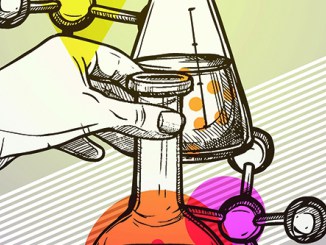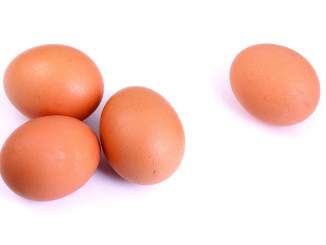
While lowering sodium is indisputably beneficial for those who already have hypertension, increasingly conservative sodium recommendations for the general public is hotly contested — and concern that too little sodium can lead to other health problems has created a complex controversy.
The public health push to reduce sodium intake is not exactly new. The first Dietary Guidelines for Americans, published in 1980, encouraged Americans to “avoid too much sodium,” and every edition since has included a key recommendation on limiting sodium in the diet.
The 2015 Dietary Guidelines recommends consuming less than 2,300 milligrams of sodium per day, and no more than 1,500 milligrams per day for individuals with prehypertension and hypertension. The Institute of Medicine agrees that limiting sodium improves high blood pressure but states there is insufficient evidence to recommend the entire population go low-sodium — pointing to a link to adverse health outcomes in some individuals. And currently, the American Heart Association recommends everyone consume no more than 1,500 milligrams of sodium per day.
The History Behind Dietary Sodium Research
To understand the evolution of these recommendations requires a brief summary of dietary sodium research. In the middle of the 20th century, strong evidence first emerged in favor of restricting sodium to combat hypertension. A series of studies from the 1980s and 1990s, called Trials of Hypertension Prevention (or TOHP) provided additional data in favor of limiting sodium in prehypertensive populations. A TOHP follow-up study in the early 2000s found a significant correlation between sodium intake and cardiovascular disease, suggesting a 17-percent increased risk for every 1,000 milligrams of sodium consumed daily. The TOHP researchers concluded there were “overall health benefits of reducing sodium to 1,500 to 2,300 milligrams per day in the majority of the population,” consistent with Dietary Guidelines at that time. TOHP data also suggest the ratio of sodium-to-potassium intake has a significant impact on cardiovascular outcomes.
A limitation of the TOHP data is there were no controls for energy intake. Individuals who consume fewer calories naturally will consume less sodium, and that won’t necessarily put them at a lower disease risk (and vice versa). In addition, how individuals respond to sodium can depend on their baseline blood pressure. TOHP participants already had elevated blood pressure, and when blood pressure is high, eating less sodium has a profound blood pressure-lowering effect. However, when blood pressure is normal, lowering sodium intake has little to no effect on blood pressure.
Fast-forward to 2014, a big year in dietary sodium research.  A systematic literature review concluded there is limited evidence that daily sodium intakes greater than 3,400 milligrams and less than 2,900 milligrams increased incidence of cardiovascular disease events, all-cause mortality and hospitalization in the general population. Also that year, authors of a meta-analysis found that individuals with daily sodium intakes of 2,645 milligrams to 4,945 milligrams have the lowest cardiovascular disease and mortality risks — and that plotting sodium and mortality creates a U-shaped curve with significantly increased risks at the highest and lowest intake levels. Some of the more compelling and controversial findings came from a large-scale epidemiologic study following more than 150,000 individuals in 17 countries.
A systematic literature review concluded there is limited evidence that daily sodium intakes greater than 3,400 milligrams and less than 2,900 milligrams increased incidence of cardiovascular disease events, all-cause mortality and hospitalization in the general population. Also that year, authors of a meta-analysis found that individuals with daily sodium intakes of 2,645 milligrams to 4,945 milligrams have the lowest cardiovascular disease and mortality risks — and that plotting sodium and mortality creates a U-shaped curve with significantly increased risks at the highest and lowest intake levels. Some of the more compelling and controversial findings came from a large-scale epidemiologic study following more than 150,000 individuals in 17 countries.
Participants with the lowest mortality and cardiovascular risk consumed between 3,000 milligrams and 6,000 milligrams of sodium per day, and greater than 1,500 milligrams of potassium per day. High sodium intake was only linked with increased risk of death and cardiovascular events when blood pressure was high, while people with normal blood pressure who consumed more than 6,000 milligrams of sodium daily did not experience increased risk of death and cardiovascular events. Additionally, those who consumed less than 3,000 milligrams experienced increased risk when blood pressure was normal.
Skeptics of these studies cite a lack of intervention trials, questionable sodium assessment tools and statistical analysis prone to random and systematic error. There also is a question of reverse causality: When people are sick, they tend to eat less, therefore consuming less sodium — and epidemiological studies cannot determine whether less sodium causes poor health, or poor health causes less sodium.
Both Sides Make Their Cases
In 2015 during the American Heart Association’s Scientific Sessions, prominent researchers on either side debated the complexities of this issue. Low-sodium proponents asserted that to protect their health, Americans must limit sodium intake — and that given the majority of Americans’ sodium intake comes from processed food, this effort should focus on industry-wide interventions. The opposing side maintained that for people without elevated blood pressure, there is no benefit to consuming less than 2,500 milligrams of sodium per day, that it actually may be harmful in some cases, and that to base general guidelines on extrapolations of data is unsound.
Currently, the perfect study to settle the sodium controversy does not exist. Large randomized controlled trials with long follow-up periods are difficult and expensive, and an ideal sodium intake assessment tool is yet to be discovered. In the meantime, the DASH diet — which places more emphasis on fruits and vegetables than sodium (DASH trials averaged around 3,000 milligrams of sodium per day) — is the most effective dietary intervention for hypertension.
And for patients and clients with normal blood pressure, practitioners should continue to develop individualized eating patterns based on clinical judgment, guideline recommendations and scientific evidence.



